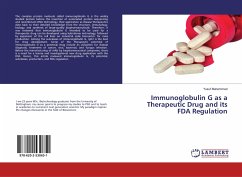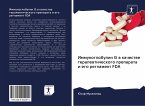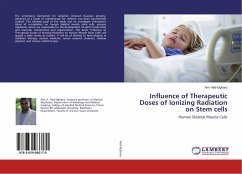The complex protein molecule called immunoglobulin G is the widely studied protein before the invention of automated protein sequencing and recombinant DNA technology, their application as disease therapeutics date back to their detailed knowledge from the structure, immunology, biology, and synthesis of large-quality biopharmaceuticals. Therefore, it was reviewed that immunoglobulin G intended to be used for a therapeutic drug can be developed using hybridoma technology, followed by expansion of the cell lines on industrial scale bioreactor for mass production. Among the subclasses of immunoglobulin G, IgG1 is the best for drug development. Some of the therapeutic potential of immunoglobulin G as a potential drug include its utilization for disease diagnosis, treatment of cancer, viral, bacterial, and fungus infection. Before the manufacturing of mAb by biopharmaceutical companies, there is a need for a license and investigational new drug application with the FDA. Hence, this article reviewed immunoglobulin G, its potential, subclasses, production, and FDA regulation.








